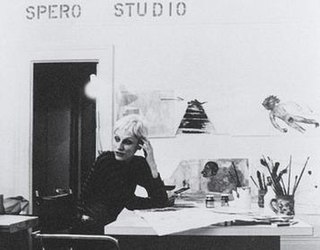Top 6 Quotes & Sayings by Nancy Spero
Explore popular quotes and sayings by an American artist Nancy Spero.
Last updated on April 14, 2025.
When I showed ‘Black and the Red III’ in Malmö, Sweden, it was a continuum - a band - all around the galleryseeing this huge space in the gallery in Malmö, I just took a deep breath and I put the paper around in a single band. Then I continued along, printing on the wall like a trompe l’oeil to reiterate the images in the work printed on paper that I had push-pinned to the wall. I literally took the rhythm and the images from ‘Black and the Red III’ and continued that on the wall.
I've always sought to express a tension in form and meaning in order to achieve a veracity. I have come to the conclusion that the art world has to join us, women artists, not we join it. When women are in leadership roles and gain rewards and recognition, then perhaps 'we' (women and men) can all work together in art world actions.
I guess maybe my art can be said to be a protest. I see things a certain way, and as an artist I’m privileged in that arena to protest or say publicly what I’m thinking about. Maybe the strongest work I’ve done is because it was done with indignation. Considering myself as a feminist, I don’t want my work to be a reaction to what male art might be or what art with a capital A would be. I just want it to be art. In a convoluted way, I am protesting- protesting the usual way art is looked at, being shoved into a period or category.
I never thought of my work in terms of being radical, although I tried to make it radical- that is, to shift the premise of what goes for pictures on a wall. I wanted my work to say something other than the usual- the usual format for an artwork being a rectangle, a square, or anything flat, framed, and attached or hooked on the wall. That was accepted practice, mainline thinking.
























